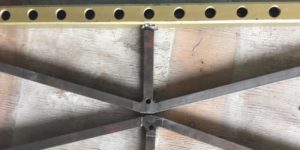Design Selection
From the three preliminary designs the team began to move forward with design selection. Visual Analysis software was used to determine the deflection and weight of the bridge under different load cases. From the analysis, the team determined that the aggregate deflection for design #4 was 0.577 in. with an estimated weight of 200 lbs. These values allow the team to rank the bridges and determine which design would perform best at the competition. Design #4 as stated above was selected as the most optimal design. A Gantt chart and budget were created and will be used going forward to monitor progress and expenses. The next step is to start thinking about truss integration with the supports and lateral bracing of the bridge.









